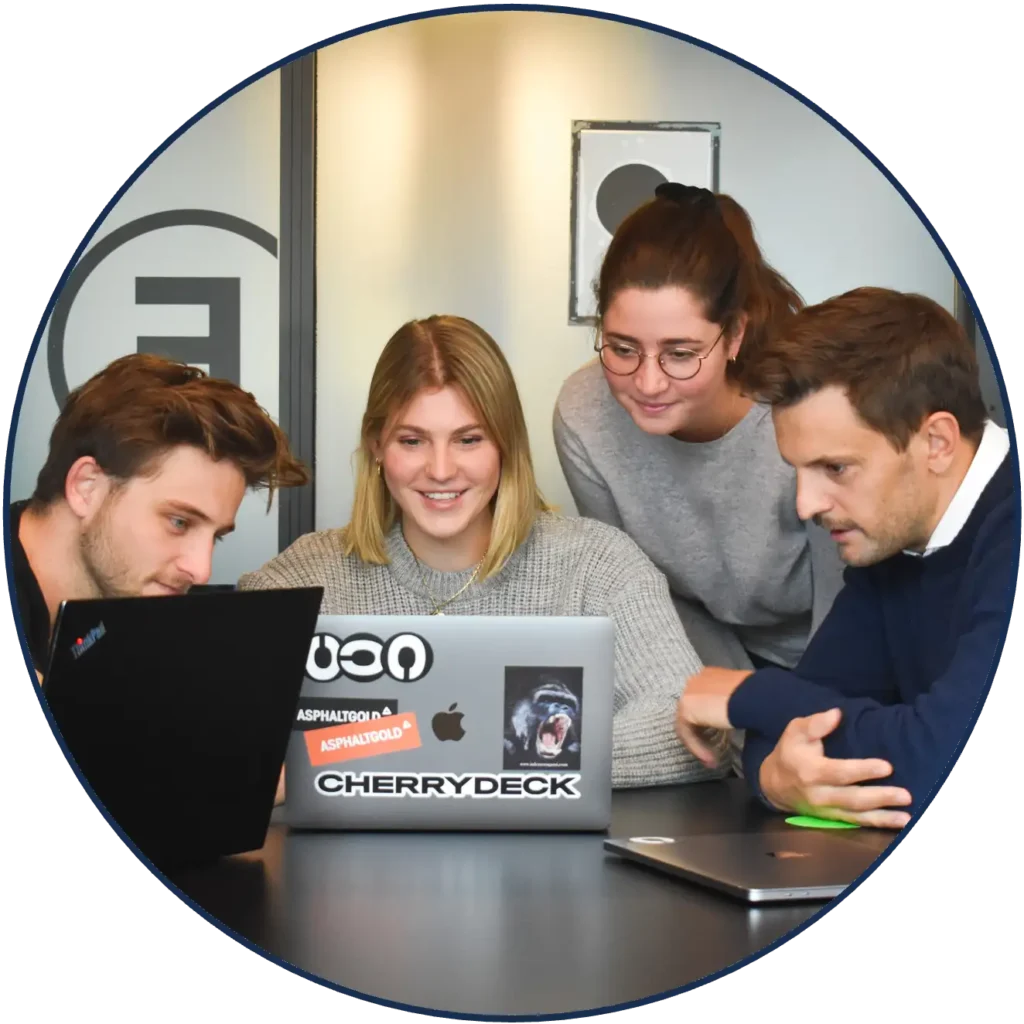Introduction
We use them to watch videos and chat when we are in bed, to listen to podcasts during an exercise bike session, to get our bearings when we are on a road trip, and to share vacation photos with our followers.
What are we talking about? Apps, of course!
Modern life depends almost entirely on them: from digital identity verification services to the ability to open a bank account with a tap; it is easy to get addicted to them.
Apps are so crucial that many companies base their entire business on them: just think of delivery companies.
But how is an app created? What technologies and skills are behind the creation of one of the most widely used artifacts in human history?
Assuming that the question is extremely broad and should be analyzed in detail, covering topics such as software engineering, design, psychology, marketing, and project management, we will nonetheless try to answer it using appropriate generalizations.
Idea Definition
This phase is the starting point for creating a successful app. Indeed, it is necessary that the idea be applicable in the real world and that it can be of value to someone.
In these cases, it is very helpful to ask yourself questions such as: “What is the problem solved by this app?” or “How can it improve users’ lives?”.
Try to envision your audience and figure out if there may really be a need for an app of that type, but don’t dwell on it too much: the first idea is rarely the one that works and you will only get a sense of whether it can work downstream of the next step, which is Market Analysis.
It is crucial to remember that the conception and development of an app is part of an ongoing, iterative process. It is unlikely that the steps described in this article will not undergo revisions and changes from the initial plan.
Market Research
Market research plays a key role in assessing the actual demand or need that the app will satisfy, as well as in analyzing the competition in the area of interest. This may involve analyzing similar apps, the services they offer, and the opinions expressed by users.
This process helps to understand the actual value that users place on such apps.
Identifying and understanding the target audience is vital, as it allows you to tailor the idea to their needs and, subsequently, plan more accurately the requirements, experiences to be offered to users, and functionality of the app. In this regard, we recommend a guide on how to do a market analysis for your idea.
Requirements Analysis
Requirements analysis represents the process of identifying, collecting, and defining the essential functionality and features that the app will need to present to meet user needs and project objectives.
This phase of the development cycle requires collaboration among stakeholders, developers and the project team in order to transform abstract concepts into clear and detailed technical specifications.
In your case, requirements can be obtained through interviews and/or questionnaires filled out by target users in the previous phase.
By analyzing them you can get a realistic and reliable view of the project and its phases, reducing risks and ensuring that the final app meets expectations.
Choosing the Platform
As you know, there are currently two platforms that dominate the market: iOS and Android.
At this stage, you need to consider whether you want to develop an app for only one of these platforms, such as a warehouse management app on an Android tablet instead of a smartphone, or whether you want to target both. The three main questions you need to ask yourself in this case are:
- Which platform do your target users use the most?
- What are the qualitative expectations users have from the app?
- What is the budget available to you?
Your choice of platform will determine where the app will be available.
Developing for iOS and Android requires different skills, so you will have to decide whether to start with one platform or both. Carefully assess your target audience and weigh the advantages and disadvantages of each platform to make the best decision.
If you would like to explore the topic further to weigh the pros and cons of the different operating systems in detail, you can read this article on which platform to choose between iOS and Android?
UI and UX design
User experience (UX) and user interface (UI) design defines how users will interact with your app. There are three main steps in creating a mockup, a model on which to base development:
- Creation of the Sketch
- Creation of the Wireframe
- Creation of the Mockup
In our social channels, especially on LinkedIn and Instagram, you will find differences and examples of sketches, wireframes, and mockups, as well as interesting details about the apps we develop and those we use every day.
We invite you to take a look!
Depending on your needs, you may be able to skip some of these steps or explore them further. You may also need other steps, such as Prototyping, to be done using no-code or low-code graphics tools or platforms.
The goal is to create a series of views that illustrate the arrangement of elements within the app. To achieve a professional result, ensure that the flow of the experience is intuitive, avoiding complexity and confusion.
An attractive and consistent interface will help keep users’ attention and keep them engaged. For excellent design, consult the guidelines for the respective platforms available at Apple Developer Human Interface Guidelines for iOS and the Android Design website for creating a user interface (UI).
App Development
After selecting the right platform for development and creating a mockup, you will need to decide on the development method, which can be: Native, Hybrid, or Web App creation. Following this choice, you can proceed with code development.
Since this article provides a general overview of app creation, it will not delve into the technical details of the code writing process. In general, each platform requires a specific language and a dedicated integrated development environment (IDE), which translates and compiles the source code into an installable package to be uploaded to stores.
We recommend working with experienced professionals who will help you translate the design into a working, optimized, error-free app, especially if you do not have an established team of developers.
Testing and Optimization
Conducts testing on different devices to ensure the app’s compatibility with various screen sizes and operating system versions. Testing is a critical step to ensure that the app works as intended and that the user experience is positive.
The types of testing suggested are many and range from tests performed during code writing, which aim to validate individual features, to functional testing, which evaluates the app’s performance against established requirements. Involving external beta testers can provide feedback and contribute to improvement. The goal is to create a high-quality app that provides a smooth and satisfying experience for users.
Launch and Marketing
Publish the app on the chosen platforms, meeting specific guidelines and requirements. Prepares eye-catching promotional materials, such as screenshots, demonstration videos, and engaging descriptions.
Devise a marketing strategy that includes social media promotion, online ads, and collaborations with influencers. The app launch is a crucial phase, so plan it carefully.
Remember that it is a significant step in a larger journey. Careful planning and a well-defined launch strategy can make the difference between an explosive start and a weak one.
Keep focusing on user engagement, respond to users’ needs, and continue to improve the app based on the feedback you receive. The launch is only the beginning; it is the post-launch journey that determines the long-term direction and success of the app.
Monitoring and Updates
After launch, the focus does not diminish, but shifts to performance monitoring and continuous improvement. Collect data on user interaction, conversion rate, reviews, number of downloads, and average usage.
Use this information to make regular updates to the app, fix any emerging issues, and introduce new features. The goal is to keep the app up-to-date and on the cutting edge.
Remember that monitoring the app is not just a post-launch activity, but a continuous cycle of learning and improvement. Through this process, the app can grow and adapt to changing user needs and market dynamics.
This ongoing commitment to excellence is what distinguishes a successful long-term app from a temporary app. Keep staying vigilant, listening, and adapting to evolution-this is how the app will thrive in the digital world.
Conclusions
Creating an app requires careful planning, good execution, and the flexibility to address challenges along the way. Clearly defining the idea, designing an engaging experience, expertly developing, and launching in a structured way can transform your vision into a digital reality, creating an impact in the app world.
Remember that the road to success is an ongoing journey, and the key is to maintain an open attitude to constant learning and improvement.




